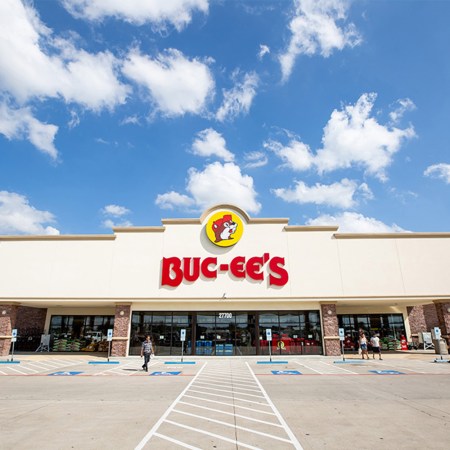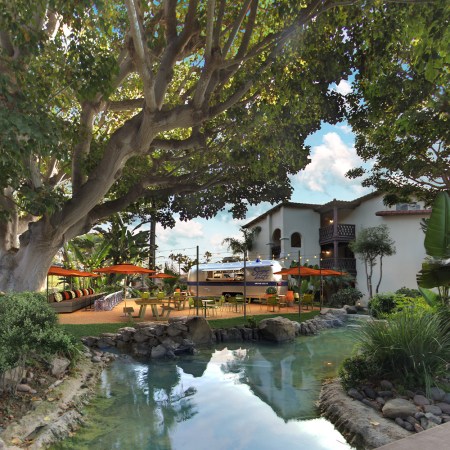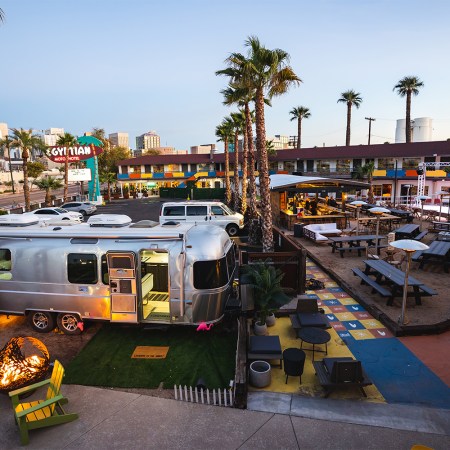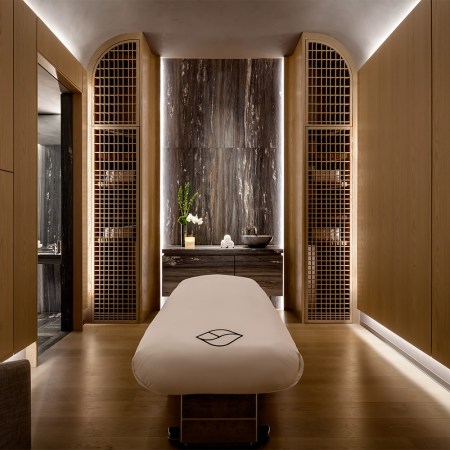Whenever people ask me where I’m from, I pause for a second. Chicago is the easiest answer, but in truth I came into this world a few miles from the city, in the suburbs. I don’t like to claim any one suburb as my own since I moved around a lot, although the close proximity of the places where I lived gives me a feeling I belong to a place, a region, a collection of likeminded neighborhoods and developments.
And so the answer I tend to give is that I grew up On The Lake. I grew up knowing Lake Michigan was always close by; it was how I knew where I was, how I established my sense of place and cardinal direction. It might seem silly to some that I take so much pride in a body of water, but I’d assume those people have never actually seen where I come from. If they took the time to really get to know that great body of fresh water, surely they’d understand.
Then, even my own knowledge of Lake Michigan only spans one part of it. I’ve seen it from other points, on summer vacations or long fall drives, but what did I really know of the lake to consider it such a big part of my life?
It was thus that I resolved to drive around the entire thing.
I waited until long after summer, after the first snow, after peak foliage, when nobody else would be around to experience it with me. I wanted to be on my own as I drove around the lake for four days.
We talk a lot about how lonely we’ve become as a culture. How we’re glued to our phones, how we spend too much time in cars, how we don’t know our neighbors, how we’ve forgotten how to make friends. I don’t doubt that, but I also think it’s easy to confuse loneliness with simply being alone. The art of getting away from it all is a lost art, and one I was craving to rediscover. So I retreated to a place that everyone but the locals tries to get as far away from as possible from November until spring. Lake Michigan is beautiful, but it can also be cruel.

Day One: Chicago to Frankfort, Michigan (342 miles)
I pick up a 2020 Lincoln Aviator at O’Hare and head straight for Chicago. I choose the Aviator for a few reasons. On the long, desolate roads ahead, I need some power, but most of all, I want something comfortable, in both form and function. The Lincoln has all kinds of features perfect for a capital-D Drive: a quiet cabin that keeps the outside noise from getting in, countless seating positions, a surround sound for the eight-hour Spotify soundtrack I’ve prepared (Chet Atkins, Neko Case, Howlin’ Wolf, the Sadies).
I start my circumnavigation in Rogers Park, the northernmost part of Chicago, and drive south. My goal is to take as few expressways as possible. Driving through Chicago normally proves difficult, especially on Lake Shore Drive, but things get off to a smooth start. As the city skyline spreads out before me, I drive past neighborhoods I’ve known my entire life; past Belmont Harbor, where all the boats look like they’re done for the season; past the beaches we went to when I was a kid.
There’s a part not far ahead where the traffic is usually tighter, but I’m surprised to find, again, that this isn’t the case. I make it in and out of Chicago, cheating a little as I take 90 South over the border into Indiana, past the tip of the lake, past Calumet City and Gary, past Ogden Dunes, a place that, during the Roaring ‘20s, boasted the biggest ski jump in the country.
Just before 11 a.m. I make it to my first stop, Indiana Dunes National Park, the most recent addition to our Best American Idea. It is as I’d hoped: cold, gray and devoid of other human life, save a man and his black lab trudging slowly along the dunes. This isn’t, I’ll admit, the ideal time to explore the park, but it gives me the first taste of that old familiar wind I grew up facing every morning.
It’s hard to describe experiencing the lake in the colder months that make up the bulk of the calendar. In the 1967 song “Dead End Street,” Lou Rawls tells a story about the “All-mighty Hawk,” a nickname for the wind that slaps you across the face around these parts. When the boiler went out, Rawls and his family had to dream up creative ways to keep warm. “I would have to get fully dressed before I could go the bed,” he sings.
I haven’t made it very far when a light November rain sets in. I miss out on seeing the 1933 Chicago World’s Fair Century of Progress homes, but I do stop and admire the little stone art deco structures that greet and say goodbye to you at the park entrance. There’s a John Muir quote etched into one of them: “The winds will blow their own freshness into you and the storms their energy, while cares will drop off like autumn leaves.”
I accept it as a good omen and move on.
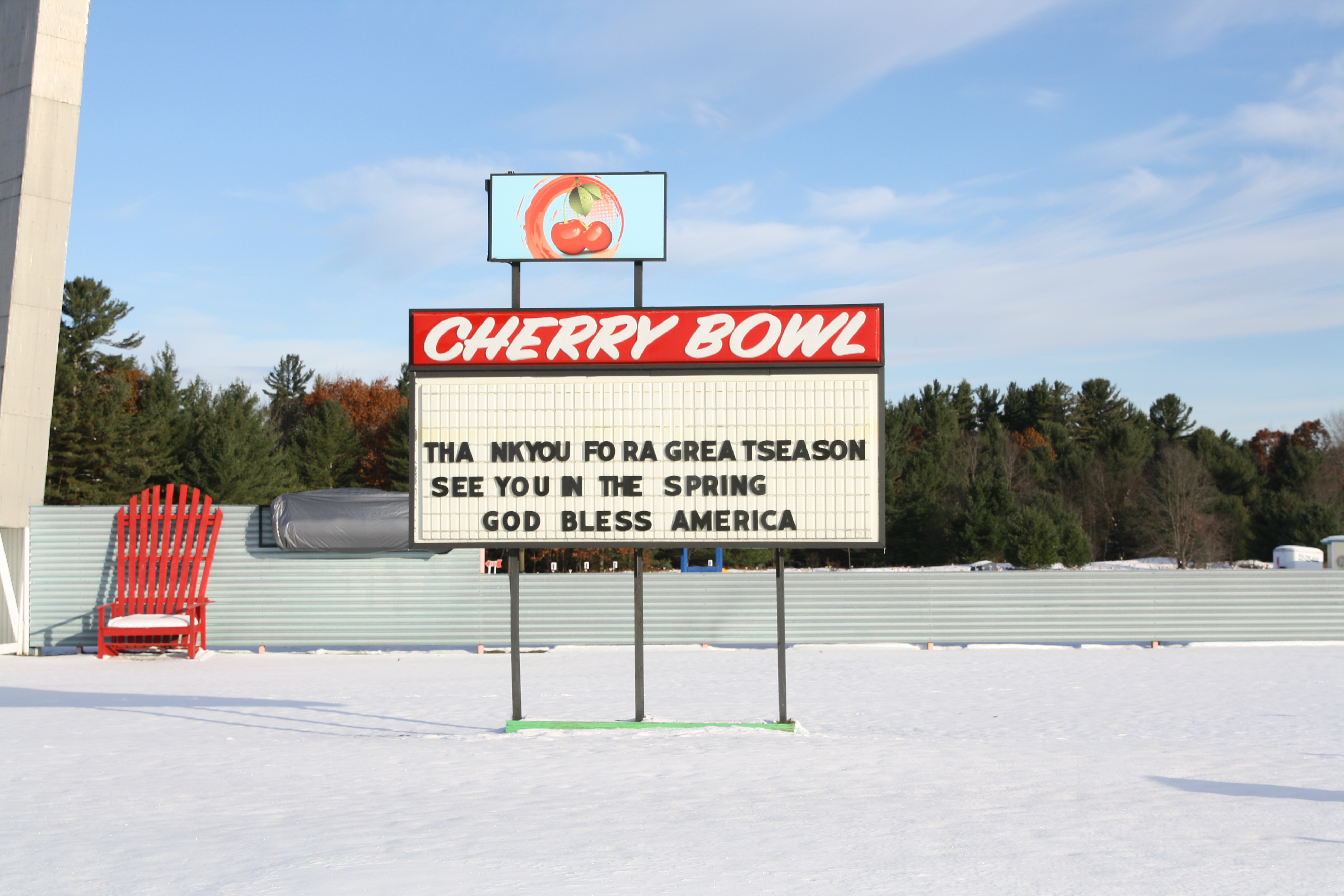
Indiana doesn’t last long. I skip 94 and take U.S. 12, past towns that have all but emptied out, either because they close down for the season or industry left a long time ago. You can tell the difference.
Gas stations are plentiful, but there’s not much else. I make it to St. Joseph in an hour. There isn’t much I want to see here besides the lake, but I do think about how I’ve only ever seen “The Riviera of the Midwest” in the summertime, when we’d go fishing for salmon and trout. It always struck me as funny that even though we lived right on the lake, most people I knew took their summer vacations in places like Door County in Wisconsin or Michigan’s western shore. Easy drives, doable in a day. It all used to feel so similar to me; what was the point?
One thing I love about driving through Michigan is you don’t have to wait long to find a brewery. I get lunch at Saugatuck Brewing Company, where a stout and a turkey reuben warm me up and supply the energy I need for the next two hours north. I get back into the Aviator and drive a few stops up 31 when I realize that I need a coffee after the beer. I end up at a Big Boy, where I order one. My options are milk, cream, white sugar and sweetener. There’s no oat, soy, hemp, almond or rice milk. It’s a welcome reprieve.
The sun is down by the time I roll into Frankfort, a town of just under 1,300 people. The lady at the front desk of the Hotel Frankfort tells me she was getting worried I wasn’t going to show, since it was 6:15 and they lock up at 8:00. I’ve never been to a hotel that closes, let alone one that closes at 8:00. Still, I’ve got a key to let me in the back door, so once I shower and change, I walk outside onto Main Street and feel like Ray Kinsella when he’s about to meet Moonlight Graham.
It’s like I’ve been transported back in time, with the glow of the Garden Theater’s neon sign to light my way. The Lighthouse is playing. I walk up and down the avenue, back to where I started, and end up deciding on my second brewery of the day: Stormcloud Brewing Company. I think about the next leg of my trip, to the Upper Peninsula, and something Jim Harrison wrote about the place he came from. How it’s “rather rough, summoning up a sturdier appetite than, say, a day of meetings in L.A. or New York, where babbling lips burn few calories.” I live in New York now, and most meals aren’t big enough for me. I do worry I’ll starve.

Day Two: Frankfort to Kohler (472 Miles)
It’s freezing the next morning, though hardly as cold as it’s going to get in the coming months. Timing is everything for a trip like this. Late October to early December is prime, but even then you might be asking for below-zero temps, heavy snowfall or both. The Aviator warms up quickly, a surprise for such an airy vehicle. I put on the seat warmers for added comfort, which I’ll do throughout the trip, tempering it every so often with an open window to get the air circulating.
I hit the upper part of the lower peninsula — Hemingway country, or at least one of the places that purports itself as such. I’ve been to the writer’s birthplace in Oak Park and his home in Key West, though I’m really not his biggest fan, save for A Moveable Feast and some of his short fiction. I like Hemingway in Michigan better than the drunk literary celebrity.
Michigan goes out of its way to promote spots connected to the Nobel Prize winner, one of which I drive about 15 minutes out of my way to see: the Red Fox Inn in Horton Bay. It’s closed, possibly for the season, but I still get out and walk around a little. I don’t feel the deep spiritual connection I imagine some fans might get when they come here. But Paul Simon went to Graceland for reasons he couldn’t explain. I’m similarly attracted to this little piece of literary history.
One person connected to the area that I do think about a lot is Sufjan Stevens. The musician famously abandoned his claim that he was going to write a record for every state in America, but not before completing one for his home state, as well as another for Illinois. I remember when the Michigan album first came out, not long after I abandoned the Midwest for New York. “Would the righteous still remain?” Stevens wonders on “Oh God, Where Are You Now? (In Pickerel Lake? Pigeon? Marquette? Mackinaw?)”. That particular line always pops into my head when I think of Midwestern transplants, especially when I’m in a bar in Manhattan filled with Bears or Red Wings fans, rooting for their hometown team from so far away. Why did we leave?
Stevens’s hometown of Petoskey is Capra quaint. Lots of pre-war architecture, monuments to locals who fought in the world wars, a J. C. Penney with the old Art Deco sign still beckoning to local shoppers. But nothing I can find mentions Stevens, who has more than four million monthly listeners on Spotify, a Grammy and Oscar nomination, and seven spectacular studio albums to his name. No mural or sign that says “Sufjan Stevens ate breakfast here” like the restaurant with a plaque dedicated to Hemingway. It’s cold and the wind is whipping all over the place when it dawns on me that, more often than not, you won’t be around to see your hometown celebrate you. Maybe in 75 or 100 years, Petoskey will name a street for its favorite son.

The Upper Peninsula is truly the siren of the Midwest: stark, plaintive, beautiful. A God’s Country-type landscape. But it’s also harsh and unforgiving. I don’t want to get stuck driving through at night, so I go a little off the lake, taking 31 to 75 to the Mackinac Bridge.
I decide I need a pasty for lunch.
For breakfast, I wolfed down a packet of slimy, delicious kippered turkey breast for breakfast back in Frankfort (there’s a lot of smoked food to be had the further up in Michigan you go). At the gas station-meets-hardware-meets-hunting supply shop where I bought it, I considered adding on a Vollwerth’s pickled Polish sausage for lunch. But ultimately I passed, because like I said, I need a pasty. I’m a man willing to hold out for regional meat pies.
For about 50 miles I worry I’ve made a mistake. All the pasty places are closed. You’d think I’d be used to this by now, but you’d also imagine that a hand pie filled with potatoes, rutabagas and meat would be a welcome respite for the few brave souls who pass through here. I finally stumble upon a shop advertising “VENISON PASTIES” and let out an “Oh hell yes” because I know you can’t beat deer meat in the Wolverine State. My friend’s dad used to stock up on it when we’d head up here for hockey tournaments. In his mind, Michigan venison is basically the Wagyu of the woods; he’d always haul along multiple coolers even though we lived in a place where attaining the meat wasn’t difficult. That experience resonated with me, and I’m hungry, so I pull into the cash-only store, chat with the lady who works there, and then head back to my car, where the divine marriage of spiced meat and starch warm me up as I eat the pasty on the side of the road. I go back in for another.
Refueled and feeling good, I continue north through ever more sparsely populated towns. I can count the number of cars I pass on the road each hour on two hands. I take Route 2 all the way to somewhere near Rapid River when my GPS goes on the fritz. The Google lady’s voice keeps telling me to go one way and then another; my decision to go down a one-way road quickly unveils itself as a terrible idea as I look at the map and notice I’m headed towards what looks like nowhere. With no room to do a three-point turn, I slowly back the Aviator up. I’m still getting used to the ability to see what’s behind me with the camera that feeds into a screen on my dashboard, and miss a patch of ice that sends me into a little ditch on the side of the road. Great, I think. This is how I die. Thankfully, the SUV has more than enough power to get me out. I continue backing up, back onto the road, back toward civilization.
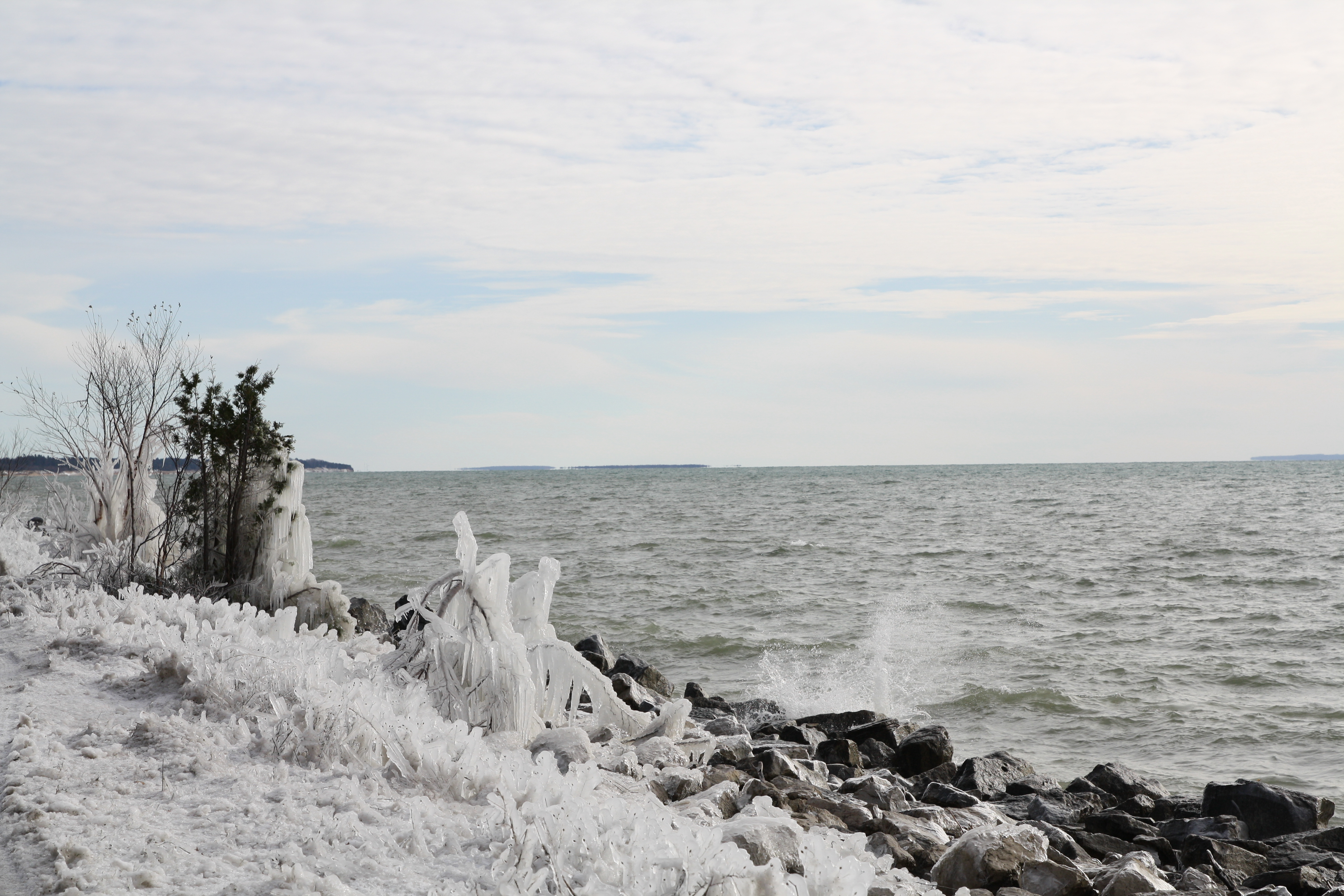
All told, it takes about nine hours until I pull into the parking lot of Lambeau Field. As a Bears fan, I’m only there to pay respect to the rival that has consistently kicked my team’s ass for the better of 25 years. I spend maybe 10 minutes in Green Bay until I’m back on the road to Kohler, WI.
After about 10 hours driving, you could put me just about anywhere and I’d feel good. But Kohler’s American Club Resort gives me a died-and-went-to-heaven feel.
Built by Richard Philipp in 1918 to put a roof over the heads of the company’s immigrant workers, the American Club is a world-class resort in the last place you’d expect to find one. Pulling into the reception, I have to sit for a second and collect myself because I am a massive sucker for Tudor Revival. But I’m also charmed by the place’s obsession with history, its attention to detail, the service and, yes, the dark chocolate brandy Old-Fashioned I treat myself to as I wind down. I’ve become so accustomed to great hotels in big cities that I’ve almost forgotten how majestic a place like the American Club can be: it’s not exactly off-the-grid, but it’s situated in a handsome little town that’s home to just over 2,000 people who work for the plumbing-components company that owns it. It’s clean and quiet, and doesn’t remind me of anywhere else in America. It’s the type of place I’d like to go just to be. You can golf or get a massage at the American Club, but you’ll likely be just as content sitting by the fireplace and reading for a few nights.
Day Three: Kohler to Milwaukee (63 miles)
The next morning I treat myself to an easier drive: just an hour south to Milwaukee. I pull into the Kimpton Journeyman, a hotel in the Third Ward district I stayed at a few years earlier when it opened. I love Milwaukee. There are great cities like New York, Chicago, Los Angeles and Miami, sprawling metropolises where you can blink and lose track of what’s happening. But there are far fewer perfect towns. Towns, to me, are places that might change a little, but they’ll always retain a distinct identity and culture. They’re also easier to navigate.
Milwaukee is my favorite town in America. I go there and know I’m probably going to get drunk and then eat something right after that will help me fully recover so I can have a nightcap and still feel unblemished the next morning. My one night in Milwaukee starts at Bryant’s Cocktail Lounge, which, in my humble estimation, is the most perfect cocktail bar in America. It’s dark enough that you’re foolish if you try to take a selfie, and there’s no menu: just a list of secret-recipe drinks the bartender makes based on the preferences and predilections you relay to them. The cocktails are so good that if the bartender gets your order wrong, I’m sorry to say that it’s your fault.
After my cocktails, I think to myself that it could be a sausage night or it could be a pierogi night, but I ultimately settle on pizza. I go to Maria’s, one of the single greatest pizza experiences in the entire country. It feels like John Waters decided to redo Grey Gardens but instead made it a story about a family-owned pizza place all decked out in pictures of Jesus and Catholic idolatry where they serve up one of the finest cracker-crust pizzas you’ll ever find. I’m hungry, so I make the mistake of ordering a Large, which doesn’t even fit onto the tray they bring it out on. I eat a quarter and take the rest for the following day’s breakfast and lunch.
As I head out of town towards state line the next day, I make one final stop in Wisconsin: Mars Cheese Castle in Kenosha. You can’t drive through the state and not go there. I think it’s a law.
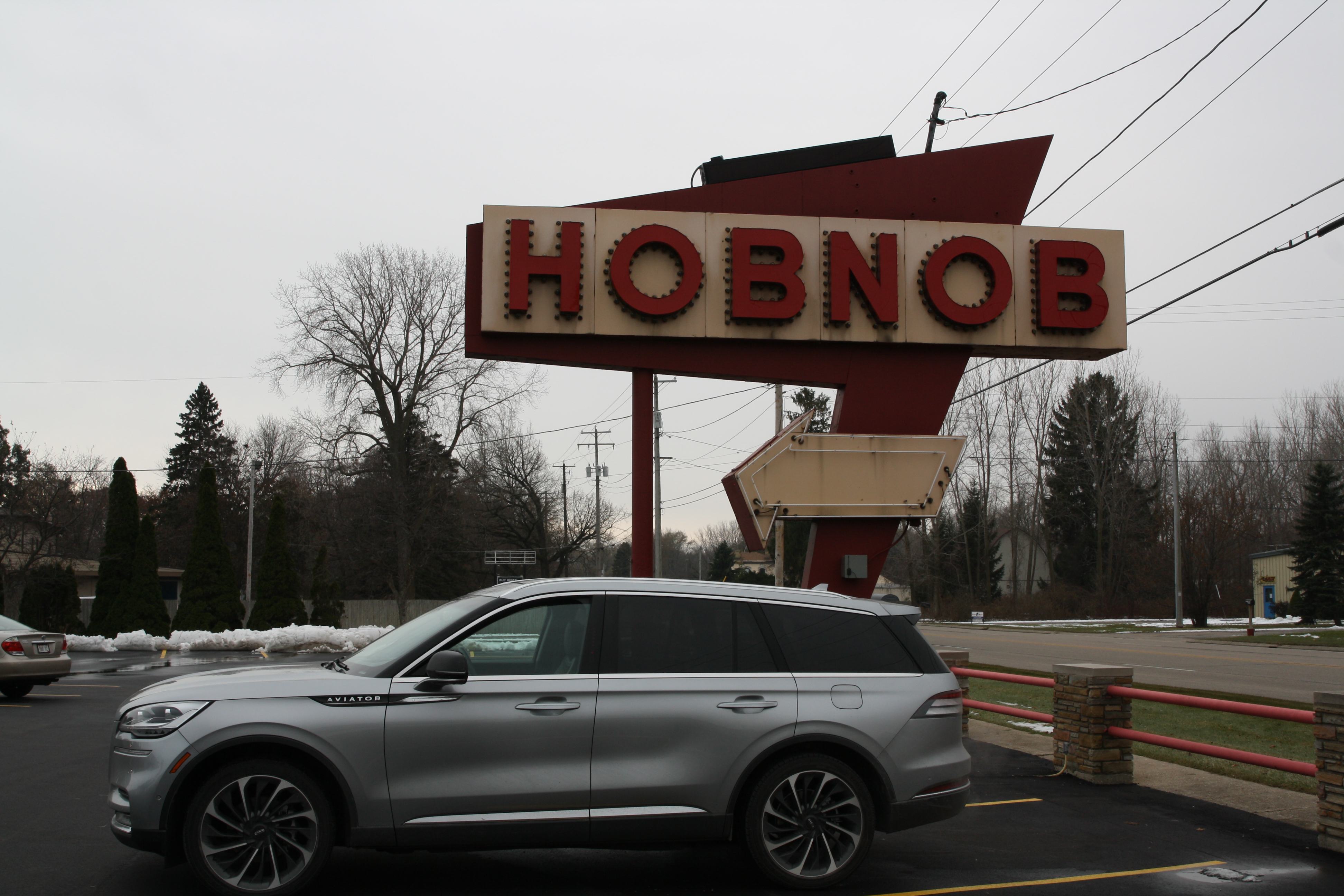
Day Four: Milwaukee to Chicago (95 miles)
I know the last stretch like the back of my hand. Waukegan is where Ray Bradbury is from. Lake Bluff will probably have signs up for “It’s a Wonderful Life … in Lake Bluff!” I turn the GPS off after I cross into Illinois and leave it there until I park my car at the Deer Path Inn in Lake Forest.
Here’s my idea of a perfectly sensible road trip: drive up the lake to where I was, in Kohler, spend two nights there, then drive down to Lake Forest and spend two nights at the Deer Path Inn. You want to really get away without really going far from civilization? Go to a company town in Wisconsin and then the Chicagoland suburbs. Two Tudor-style places (Deer Path was built about a decade after American Club, in 1929), both outside of bigger cities, but also two of the quaintest, coziest and greatest hotels in the Midwest, and possibly the country. If you’re going another route and choosing to do something like, say, drive around the entire lake in a few days, then I can’t think of any better spot to reward yourself a few nights sleep than the Deer Path Inn.
Before I can unwind, I have to finish my trip. I get back in the Aviator and take Sheridan. I go through Highland Park, where I must have gone to a dozen bar and bat mitzvahs growing up; through the part of the road known as “the ravines” because of how they twist and turn; past the iconic Bahá’í House of Worship; and finally into Evanston, to Al’s Deli.

I seek out sandwiches for sport. You tell me there’s a place in Tulsa that makes the greatest tuna melt on the planet, then I’m going to put it on my list. I love classic, old-school places that can serve a meal between two slices of bread in a way that’s elevated but you can’t explain why. That’s Al’s: a little spot by Lake Michigan that feels like Paris. Sandwiches on fresh baguettes, soup, haggis-flavored potato chips. Al’s is one of the few perfect places to me, an unassuming neighborhood shop I’d been thinking about since I started my journey. I order my penultimate sandwich.
Chicago is warm, at least compared to northern Wisconsin and the Upper Peninsula. A balmy 39 degrees with merciful light winds. My last leg of the trip should take about an hour, but I stretch it to two on my way to Evanston, hitting up little spots in Highland Park and Glencoe, looking at all the midcentury homes and then stopping to eat my sandwich. I know the finish line is in touching distance because there’s this final stretch on Lake Shore Drive where the skyscrapers that describe the skyline become visible.
I end my journey roaming the sands of 63rd Street Beach and then Jackson Park, site of the 1893 Columbian Exposition and the Museum of Science and Industry, where the ghost of Clarence Darrow supposedly hangs around. I have memories here, just like I do all up and down the lake. But this place feels especially important, from class field trips to Bears games at Soldier Field, before they added on that part of it that makes the stadium look like a spaceship trying to snatch a Roman colosseum. I’ve been coming here my entire life for something or another. Lake Michigan has always led me to wherever I wanted to go, but I was only really familiar with a sliver of it. After 25 hours of driving and 1136.8 miles in four days, I can say I know it better, but I also know there was a reason I needed to drive around the entire lake by myself.
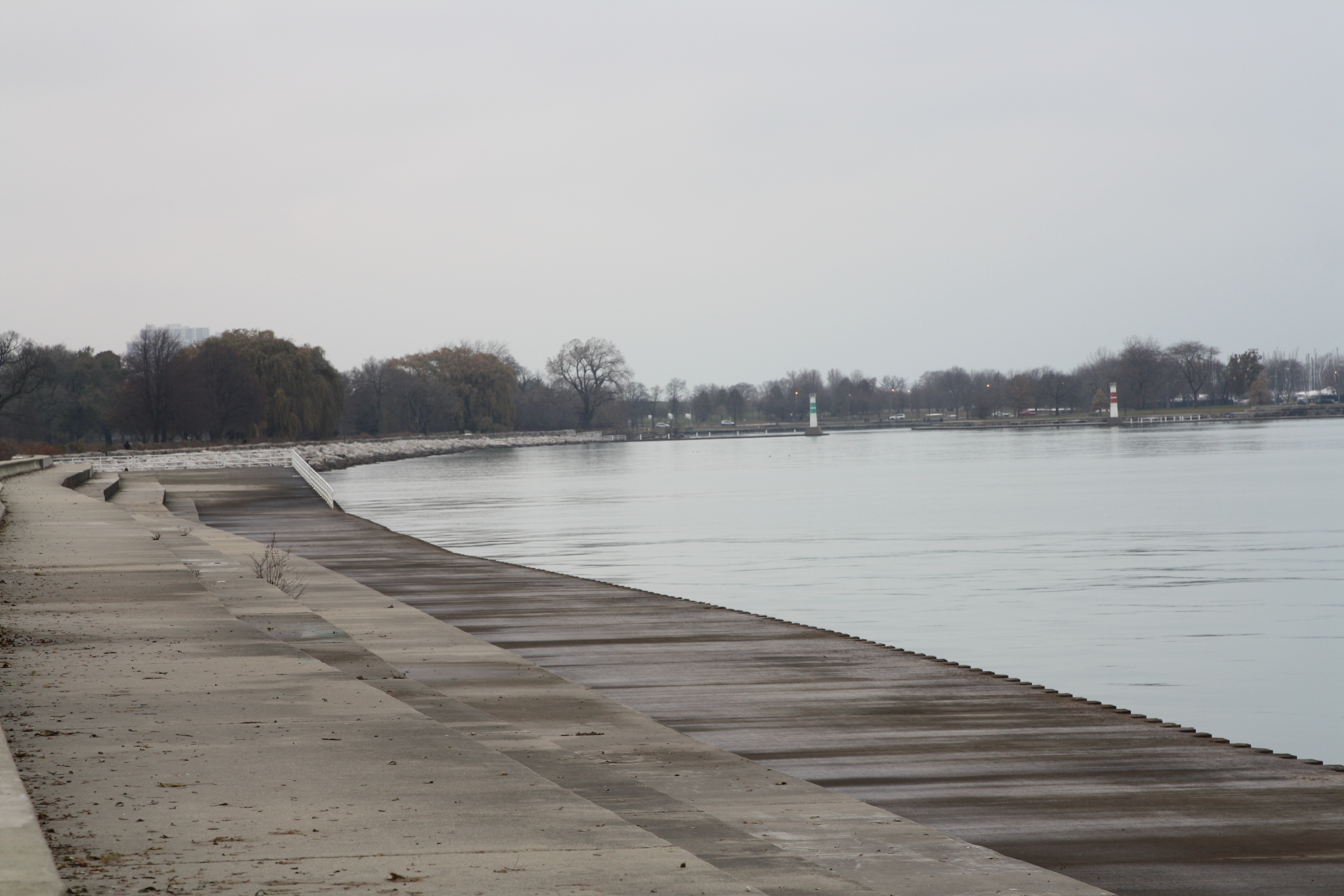
I haven’t lived near Lake Michigan for 18 years now. My separation from the place I’m from is of legal voting age now. Yet there’s always been this longing to return. Not just for a visit, but for good. That maybe we’d end up in Evanston or Winnetka or Chicago and my kids would swim in the same water I swam in, fish on the lake, learn to love that stretch of Lake Shore Drive as much as I do. I’d had this little dream for nearly two decades, and then, last summer, it came to an end.
It was nothing dramatic; in fact, it’s a great thing. My wife and I signed the papers to buy an apartment in Brooklyn. After countless crappy landlords and bad roommates, it was time to put down roots. We’d both been living in New York so long that we could say we really did come of age there. It’s where we met, where we got married. New York is home now; Lake Michigan is the place where I was born and lived for the first two decades of my life. All traces of my family had long since moved away, so beyond friends and business, I didn’t have anything tethering me to this place that I’d thought so fondly of returning to.
That’s really why I drove around the lake, why I spent an entire day planted in that Aviator, circling a great big body of water in the dead of autumn all by myself. Lake Michigan will always be there, and I can visit it, but I knew I’d never be going back to it. I felt like I needed to do something big, to pay it proper tribute.
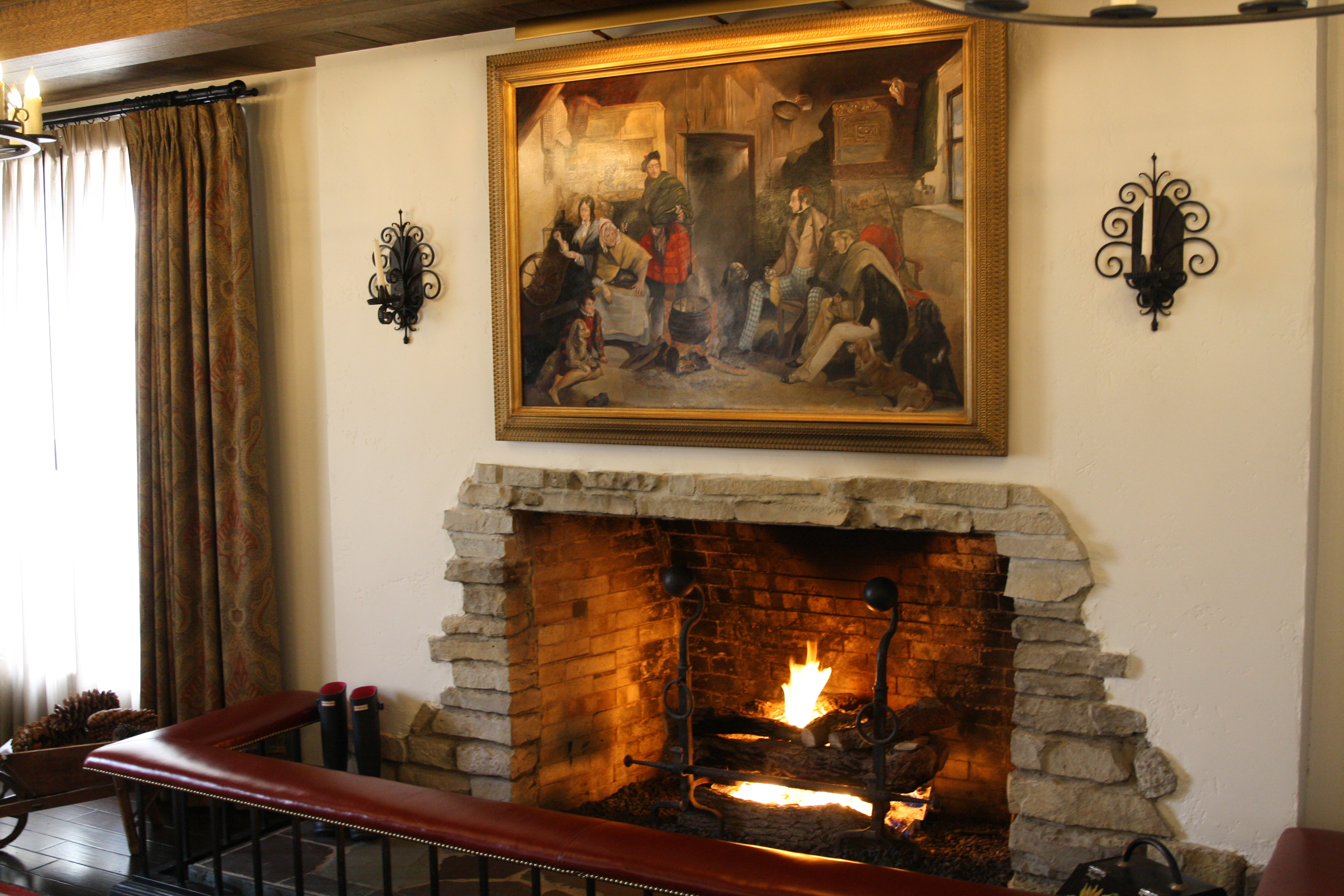
I wind everything down with a drink at the Chicago Athletic Association and then head back to the Deer Path Inn, where I treat myself to a Martini and a Big-Ass Steak Sandwich topped with provolone cheese, peppers, caramelized onions and, because I’m close to Cook County, giardiniera. I go for a walk around Lake Forest afterward to try and not feel so bad about what I’ve put into my body over the last 84 hours. There’s not a soul outside — a fitting end to my journey.
When I make it back to the hotel, I decide I can have one more drink. I grab a seat right in front of the fireplace. There’s nobody in there for a moment, and I’m able to appreciate what a truly splendid hotel the Deer Path Inn is. I’m a fan of “They don’t make them like they used to” sort of places, and this certainly qualifies. I’m about to finish up my drink when a guy sits down on a chair next to the couch. We don’t say anything for a second and then he asks how I’m doing.
Since the bulk of my conversation over the last few days has consisted of ordering coffee and food, pleasantries with hotel staff and Facetimes with my wife, I find myself quite happy to finally talk to a stranger. I tell him I’m doing great and ask him the same.
“Not bad,” he says. “I’m visiting my kids. I used to live here, but we sold the house. Now we stay here when we visit instead of burdening them.”
I chew on that for a second and then tell him, “It’s a beautiful place. I’m glad I got to see it.”
And that’s how I said goodbye.
For more travel news, tips and inspo, sign up for InsideHook's weekly travel newsletter, The Journey.

